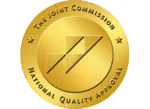Drug and alcohol abuse is a complex disease that grows from a mix of biological, behavioral, emotional, interpersonal, and social elements. Those who find themselves addicted to drugs or alcohol may have used substances to cope with negative feelings and toxic memories that may have seemed unbearable. For others, substance abuse is a way to deal with trauma and feel control somehow. There are many possible reasons, but they all result in actions and behaviors that will threaten an individual’s safety, health, and life. For these reasons, a sober living program, a PHP addiction treatment, or outpatient alcohol treatment in Los Angeles may be necessary for recovery.
Addiction is a serious chemical dependency that causes severe shifts in brain functioning. When an individual becomes addicted to drugs or alcohol, their pattern of abuse can be difficult to break without help. Addiction also makes a person dependent on the feelings and effects which substances provide. Addiction experts say that “like other chronic diseases, addiction often involves cycles of relapse and remission. Without treatment or engagement in recovery activities, addiction is progressive.”
Relapse Rates
After completion of a primary treatment program, recovering substance abusers need to take extra steps to prevent relapse because substance addiction is complex. It involves many characteristics that need to be worked on (often simultaneously) in order to maintain sobriety. Relapse is not uncommon, which is why drug abuse is so dangerous.
However, if a person does relapse, that often signals that certain aspects of treatment were ineffective. It may also indicate that an additional co-occurring illness is also present. Recovery needs to be fixed to include these new variables in a person’s treatment plan in these situations.
Relapse rates can occur in 40% to 60% of recovering abusers. While those rates may seem high, those who choose not to live in a transitional environment (like sober living) face additional risks and poorer chances of staying sober. Transitional living helps recovering abusers create a plan while providing multiple positive support networks within the home.
Sober Living Homes and Relapse Prevention
One positive step towards relapse prevention would be to stay at a sober living facility. In sober living, house requirements may seem difficult, but they only help.
Sober living homes provide a peaceful and orderly environment where recovery is the central focus. This is felt in all aspects of residential life. First, all residents must remain sober for the entirety of their time. This differs greatly from living independently. With this requirement, residents may feel positive pressure from those within the house to maintain their sobriety. Residents also have numerous opportunities available on-site that they would normally have to find themselves and make arrangements for like:
- Individual therapy
- Group therapy
- Transportation services
- Resources for finding a mentor or twelve-step meeting location
Twelve-step meetings are strongly encouraged and often required to keep residency at a sober living home. The reasons are numerous. Twelve-step meetings (like Alcoholics Anonymous or Narcotics Anonymous) have a reputable and historic past. Alcoholics Anonymous was founded in 1935 in Ohio. Since then, they have grown and become widely known due to their extensive reach, support system, and methodology.
In addition to ensuring that residents remain sober, facilities always prohibit drugs or alcohol within the home. The house staff ensures this. Curfews, strict visitor policies, and restrictions also eliminate the chance for a resident to acquire substances. According to research and data, “science has taught us that stress, cues linked to the drug experience (such as people, places, things, and moods), and exposure to drugs are the most common triggers for relapse.”
Sober Living Homes and Relapse Prevention
Creating structure through routines and goals helps maximize the chances of recovery. Sober living helps people as they prepare for re-joining the outside world. In addition to working on their sobriety through twelve-step meetings and therapy, residents also create a plan of action during their stay.
For extended stays at sober living, residents will have the time to reflect on the roots of their addiction and also how to best avoid temptations once they leave. Relapse prevention involves preparation for independent living. Recovery is a continuous process because relapse can occur even after extensive, long-term phases of sobriety.
Relapse Prevention and Change
Relapse prevention may involve a change of residential location once a person leaves sober living. This often happens out of necessity and as a way to establish healthier living. Sober living makes many of the hard choices for the recovering individual in the beginning. Aspects like house rules, visitor restrictions, curfews, and frequent drug testing are beneficial elements that do not exist in familiar environments.
In addition to a change of residential location, it’s necessary to think about whether former social networks should remain. They may need to stay away from old friends and others that may have been dangerous influences. After sober living, the home environment must continue to be as stress-free as possible.
Completing primary treatment and sober living is life-changing and is something to be proud of. Recovering abusers should keep that in mind as they move forward. Use the profound lessons learned in therapy. Set boundaries with sobriety permanently at the forefront. Have a backup plan. If you can’t reach a sponsor, have other support connections ready.
Avoiding Relapse Is Possible—With the Right Help
The Substance Abuse and Mental Health Services Administration has said that “relapse-prone individuals cannot recover alone. They need the help of others. Family members, 12-step program sponsors, counselors, and peers are just a few of the many recovery resources available. A counselor should ensure that others are involved in the recovery process whenever possible.” People met through sober living are all part of a new social network that understands the difficult challenges.
Maintaining sobriety is a process that is specific to each individual’s experience with substance abuse. People will develop new healthy coping mechanisms, new perspectives, actions, goals, and a renewed sense of self during recovery. With a persistent commitment to a plan and the support of positive and sober figures, many can reach a place of healing.

Dr. Deena is the Chief Clinical Officer of Westwind Recovery®, an award-winning outpatient treatment center in Los Angeles where she oversees the clinical and administrative program and treatment methods. Dr. Deena is a doctor of psychology and licensed clinical social worker since 1993. LCSW #20628. Originally from the East Coast, Dr. Deena has worked running treatment centers, worked as a therapist in psychiatric hospitals as well as school settings and currently has a thriving private practice in the LA area. Dr. Deena has appeared regularly on the Dr. Phil Show as an expert since 2003. She has also been featured on many other TV shows, podcasts and has contributed to written publications as well as podcasts.




